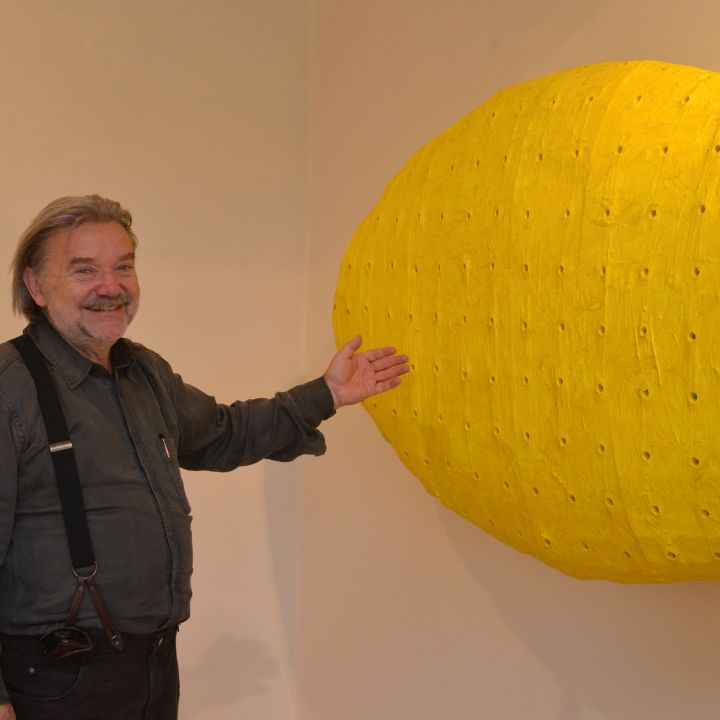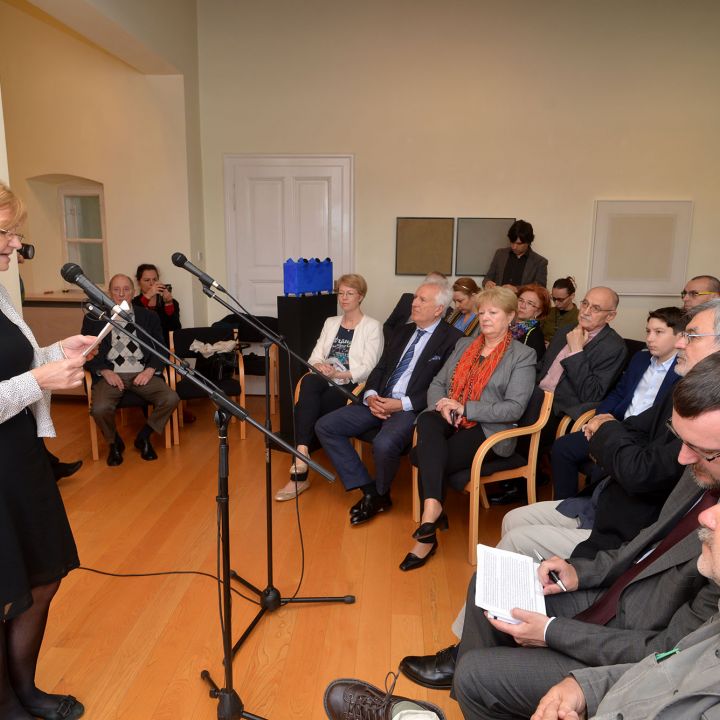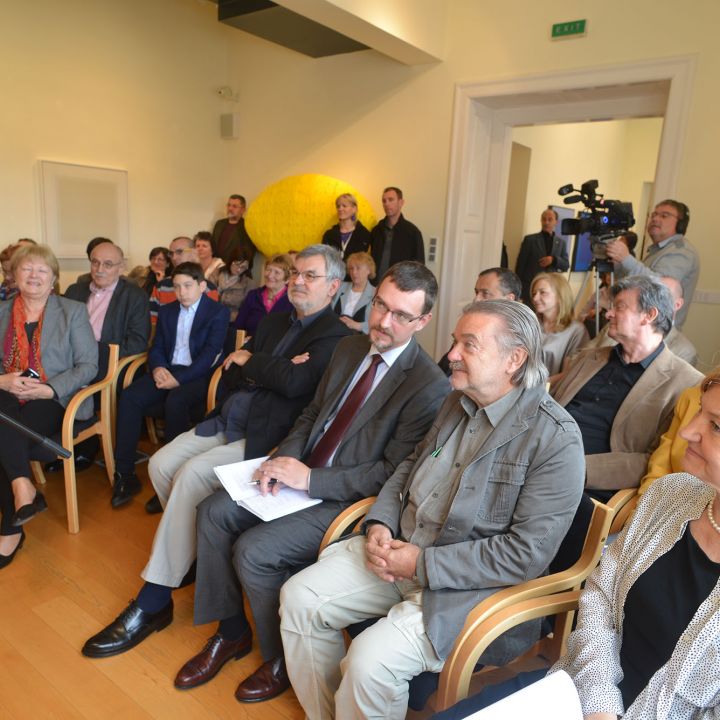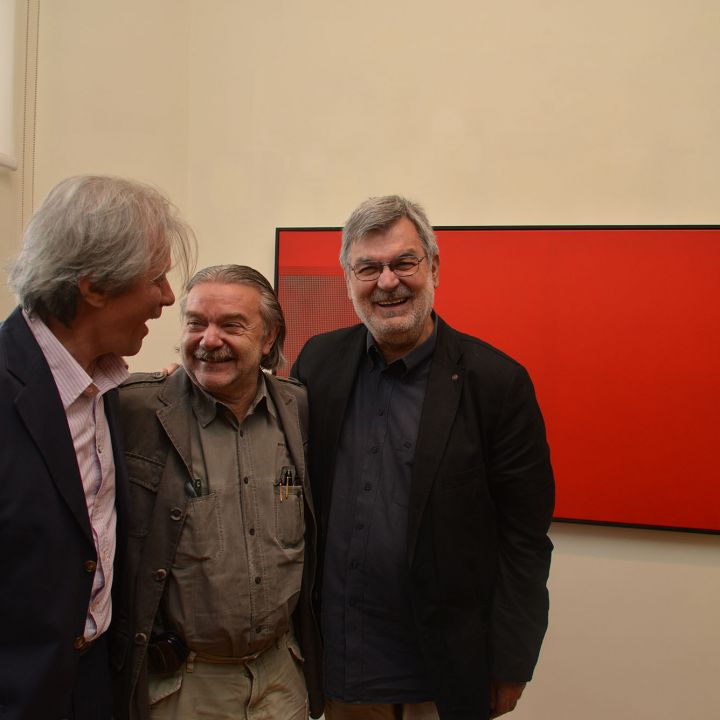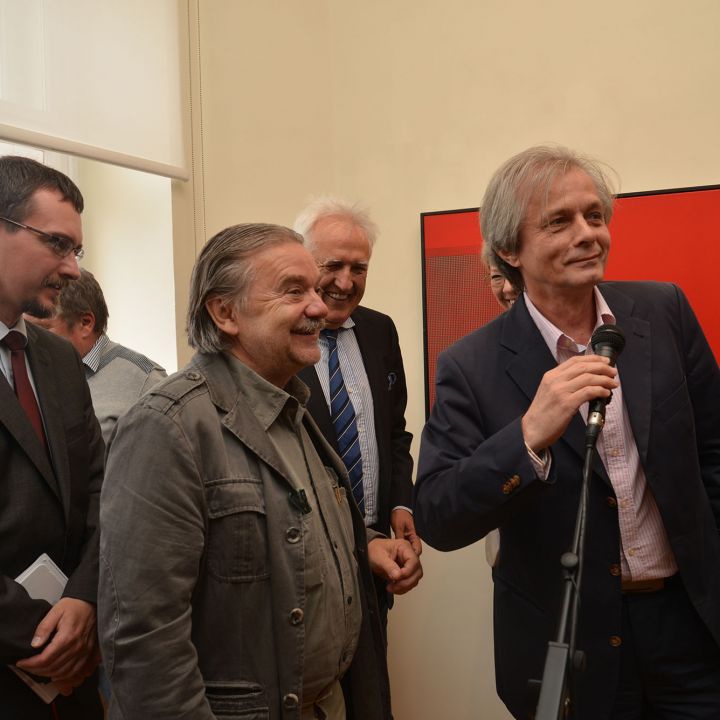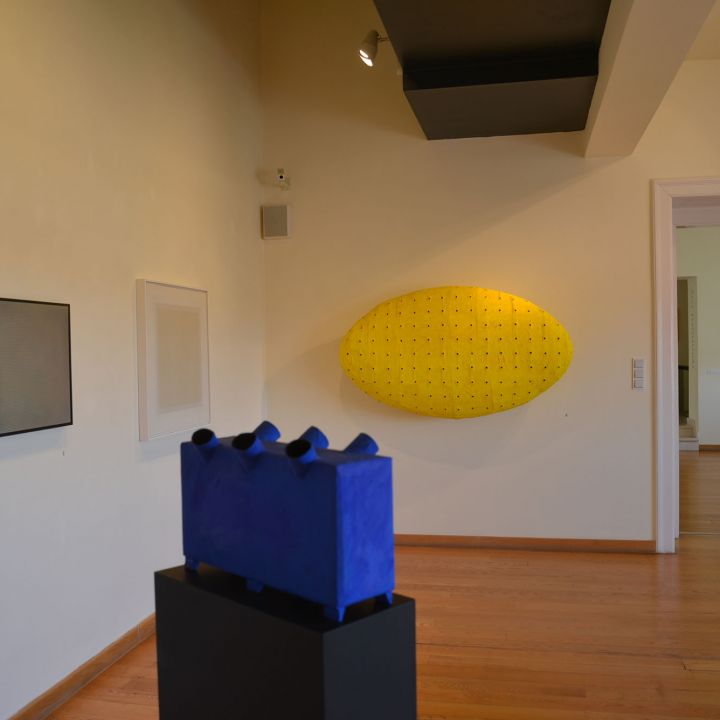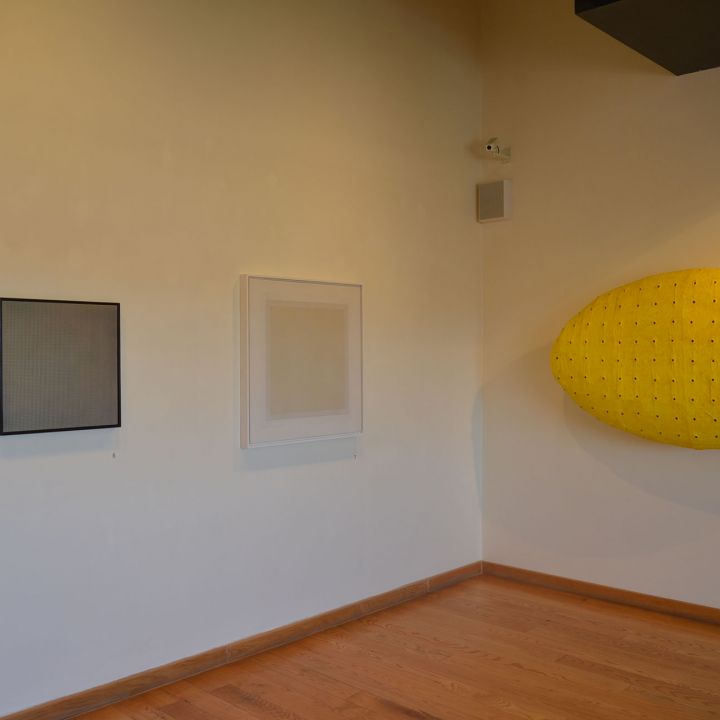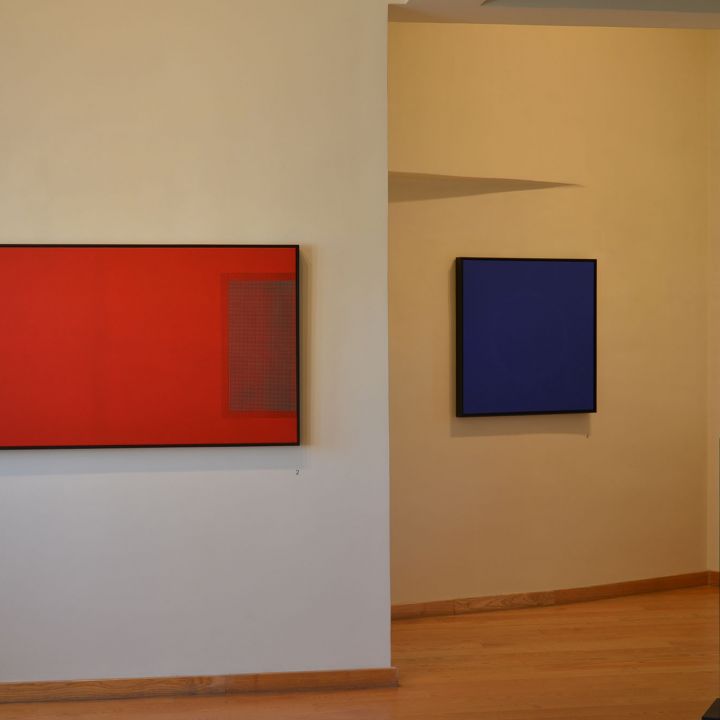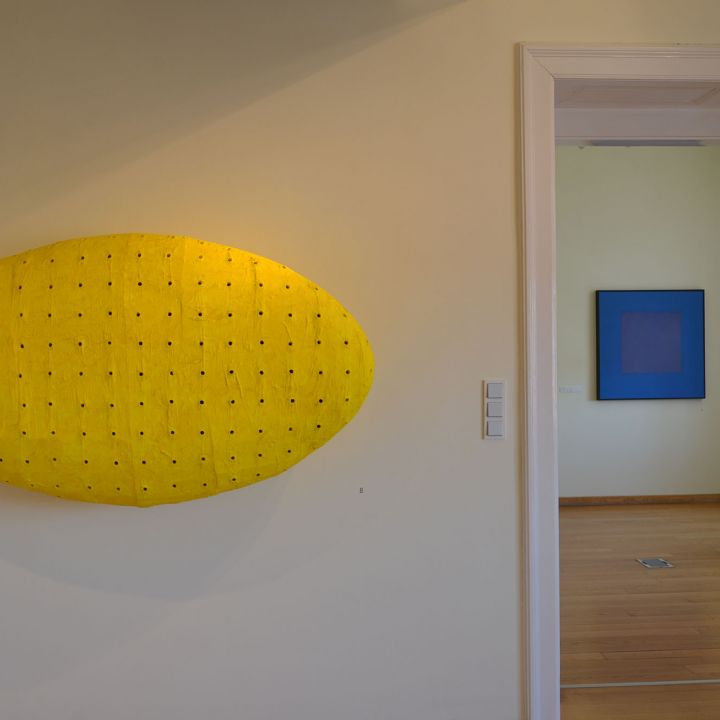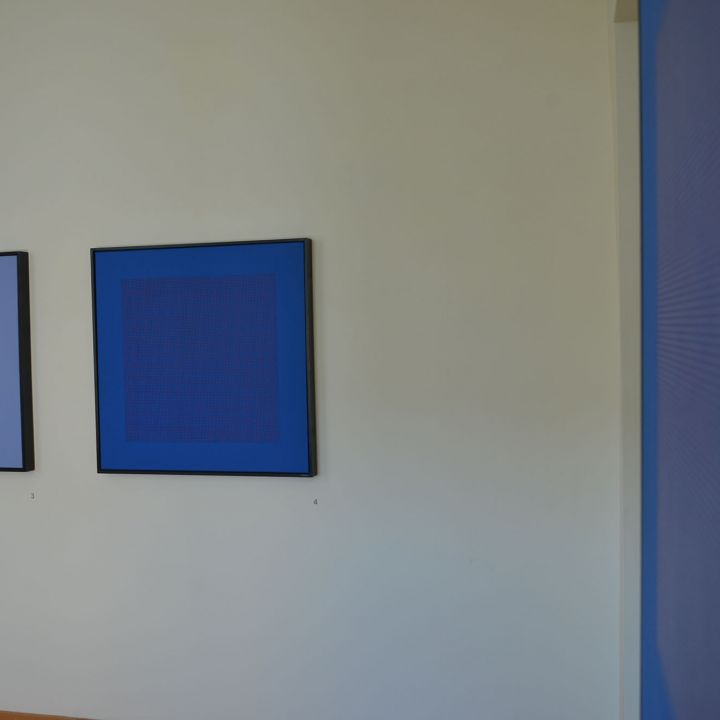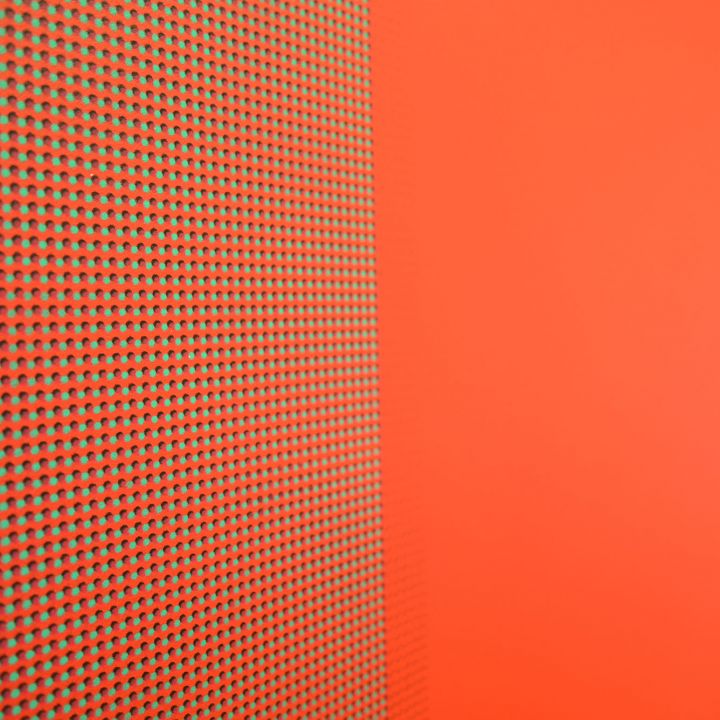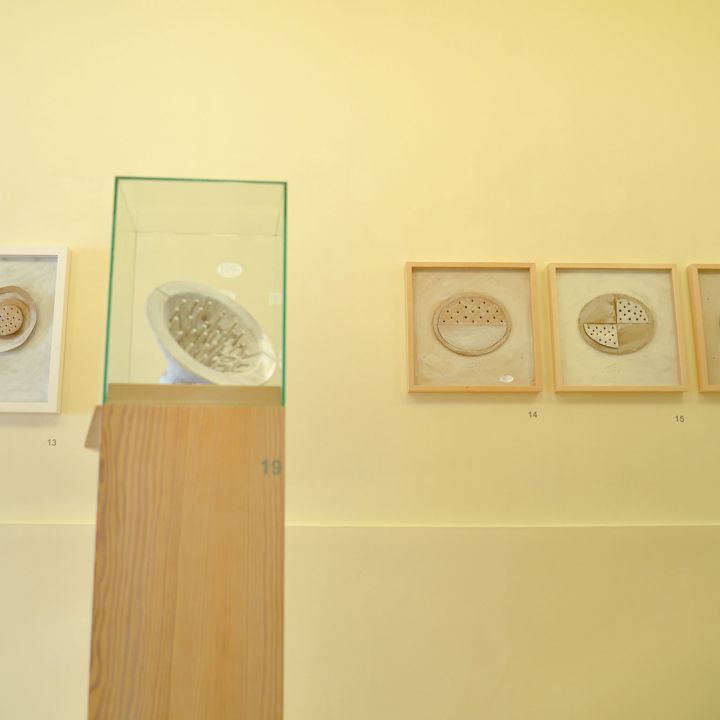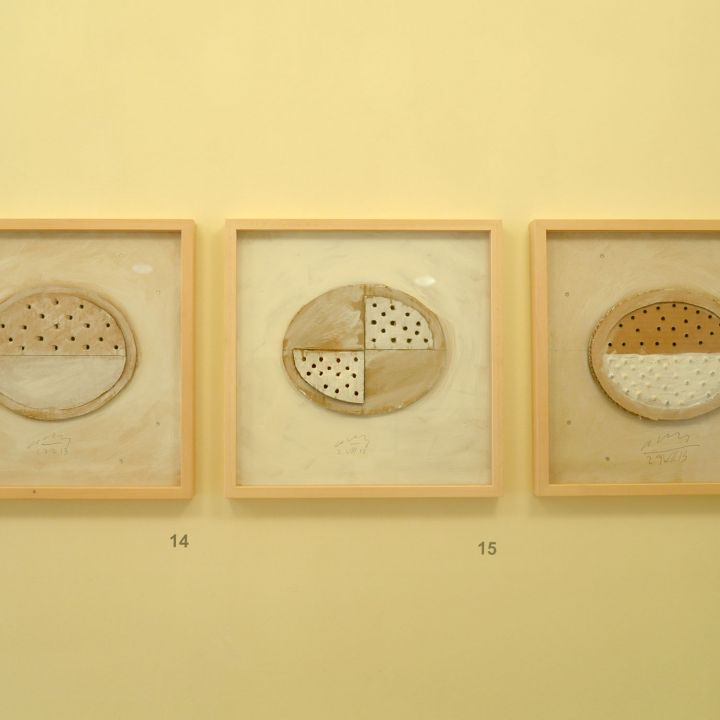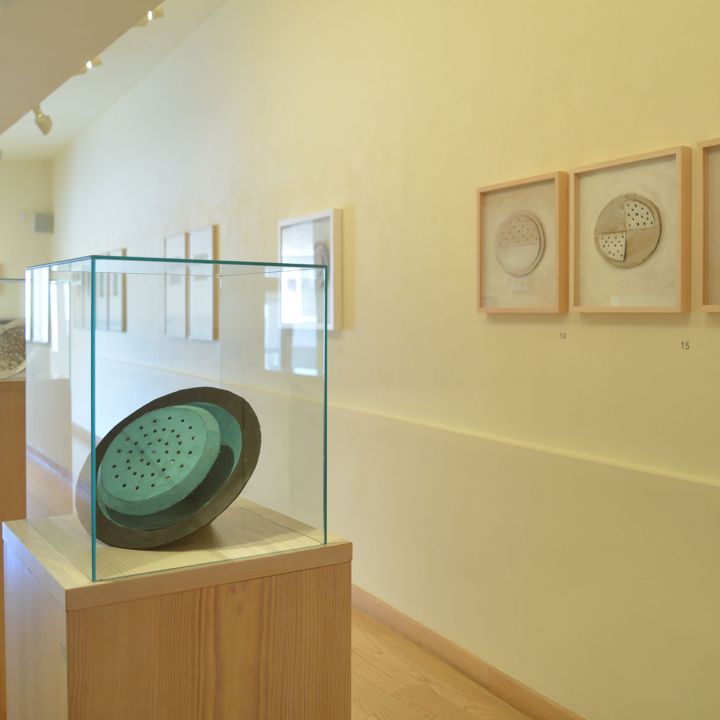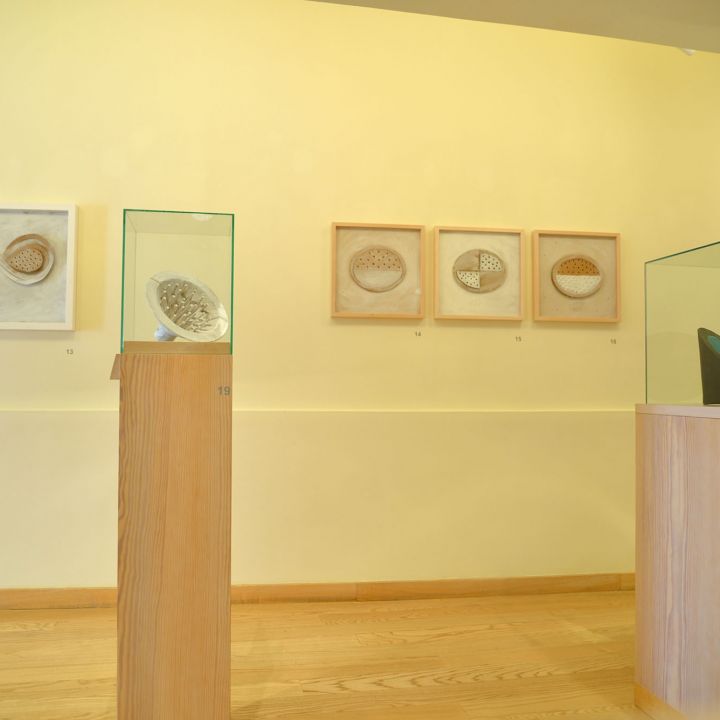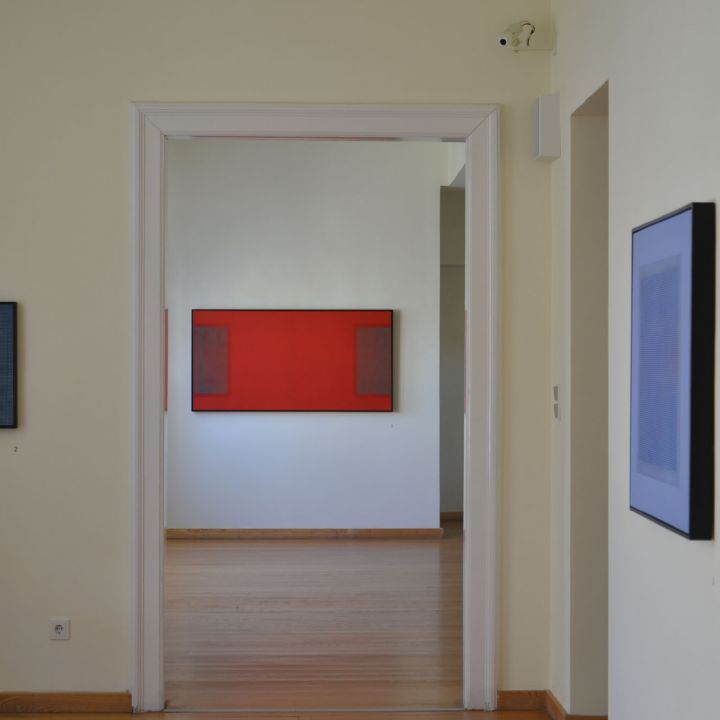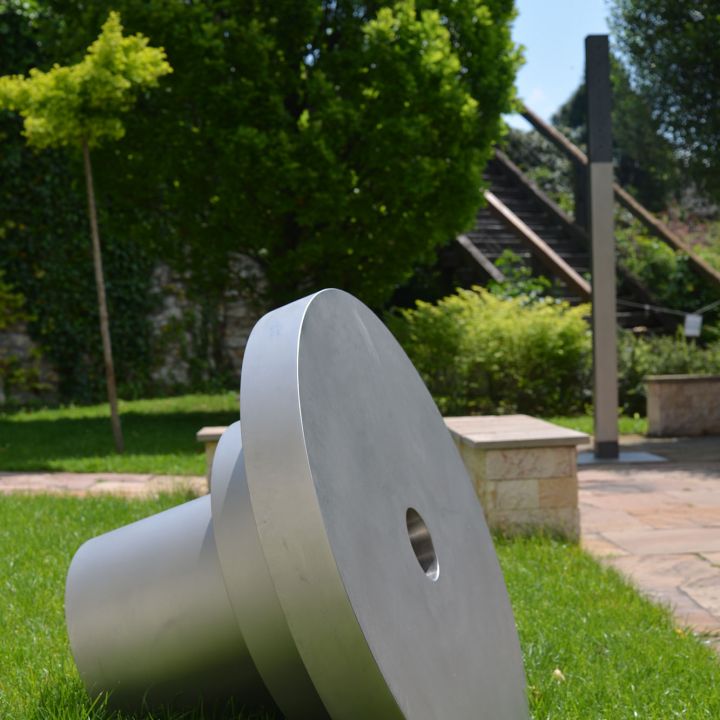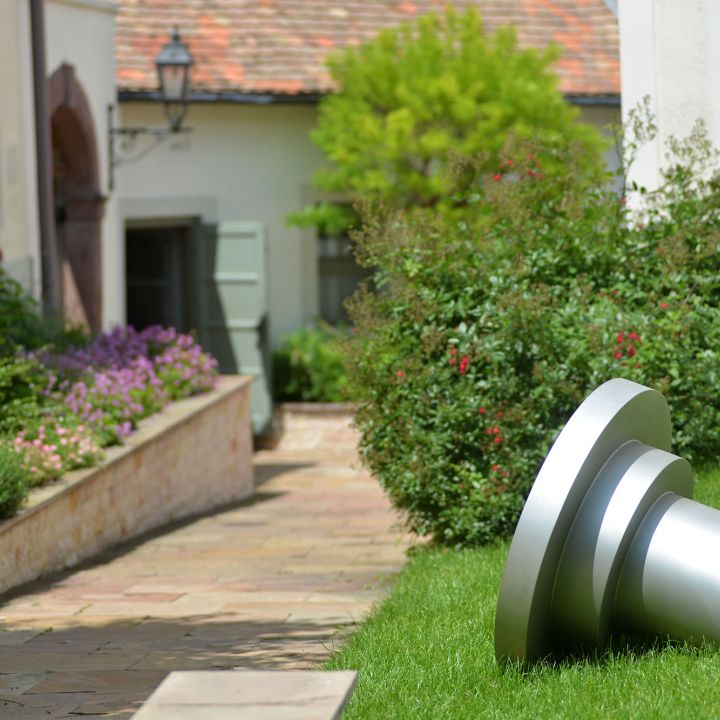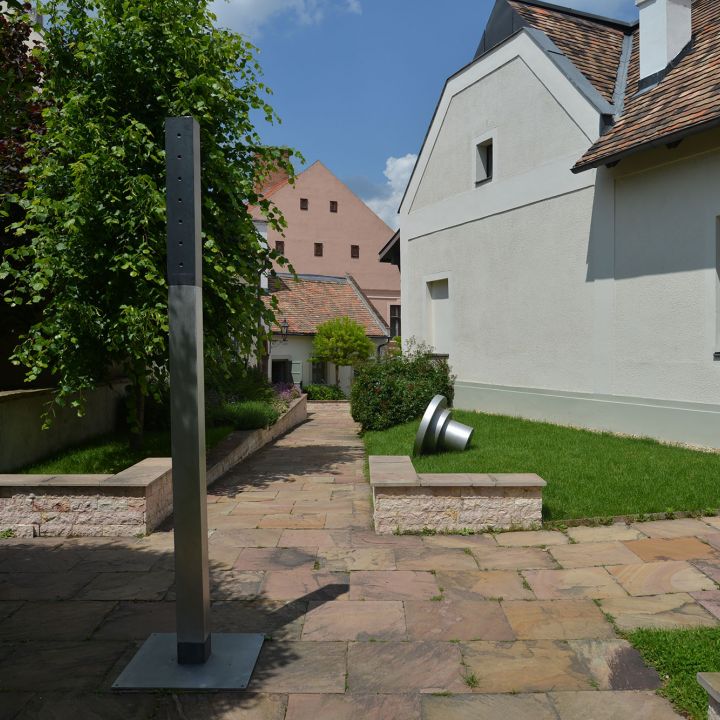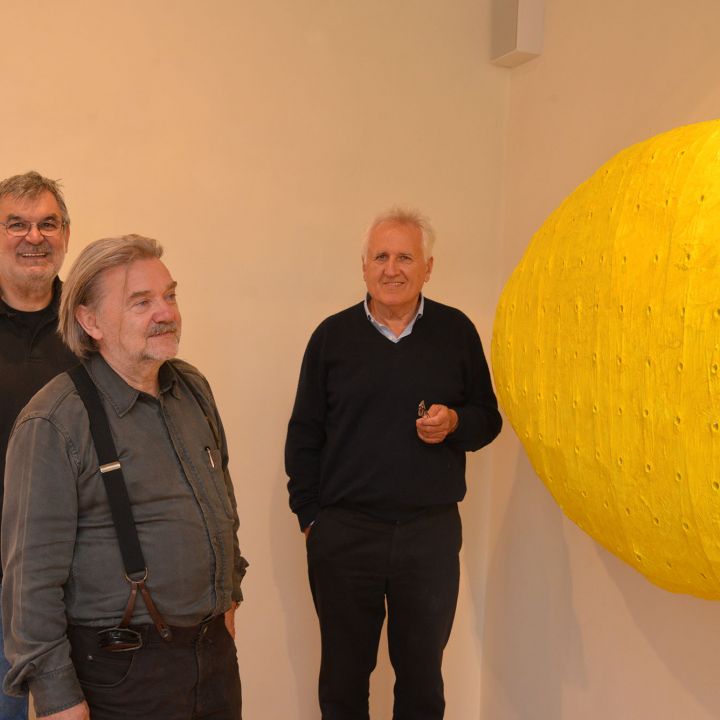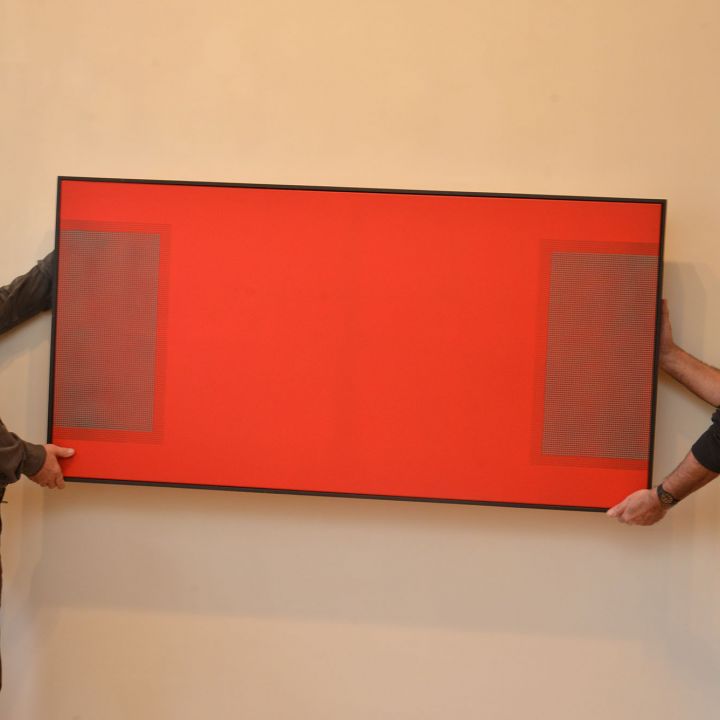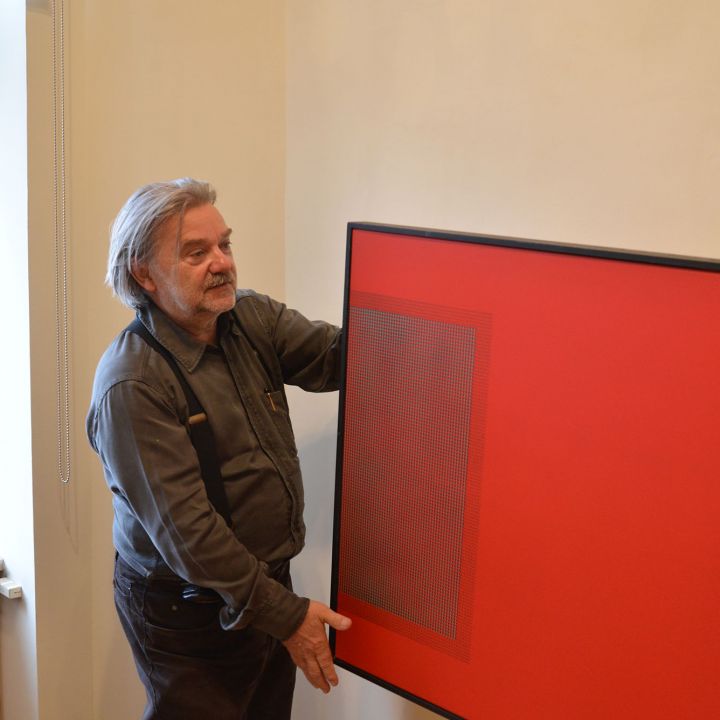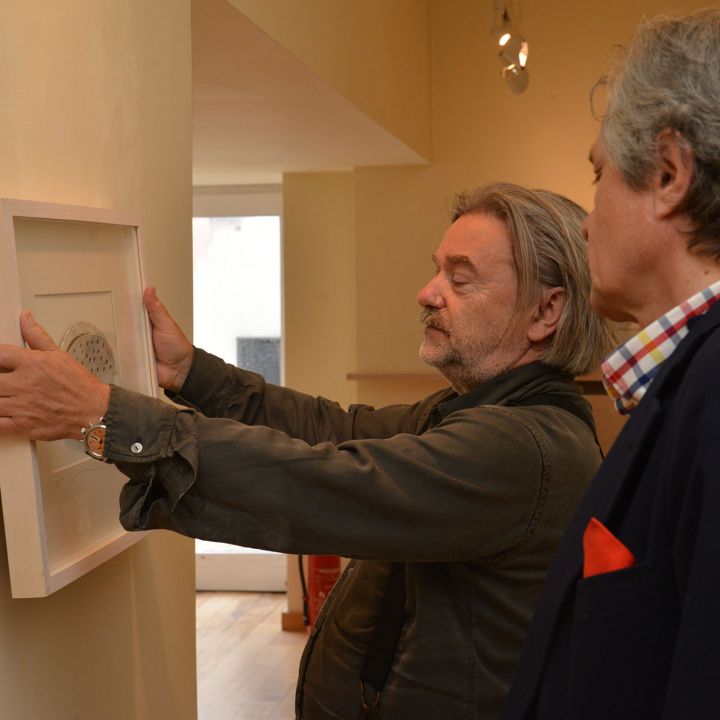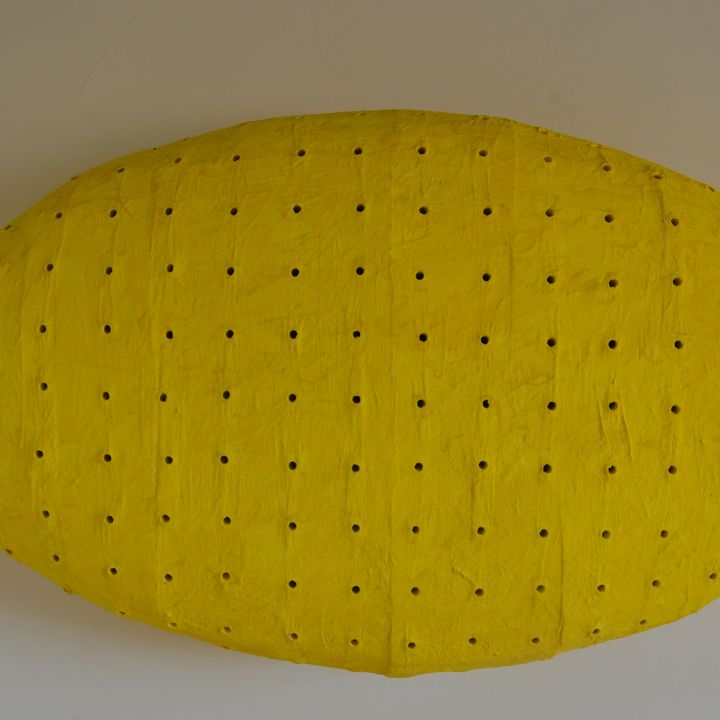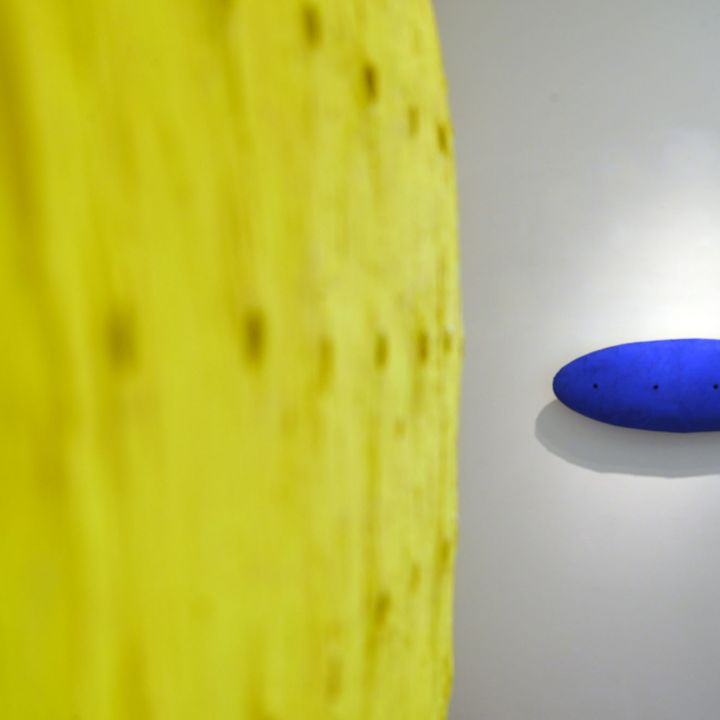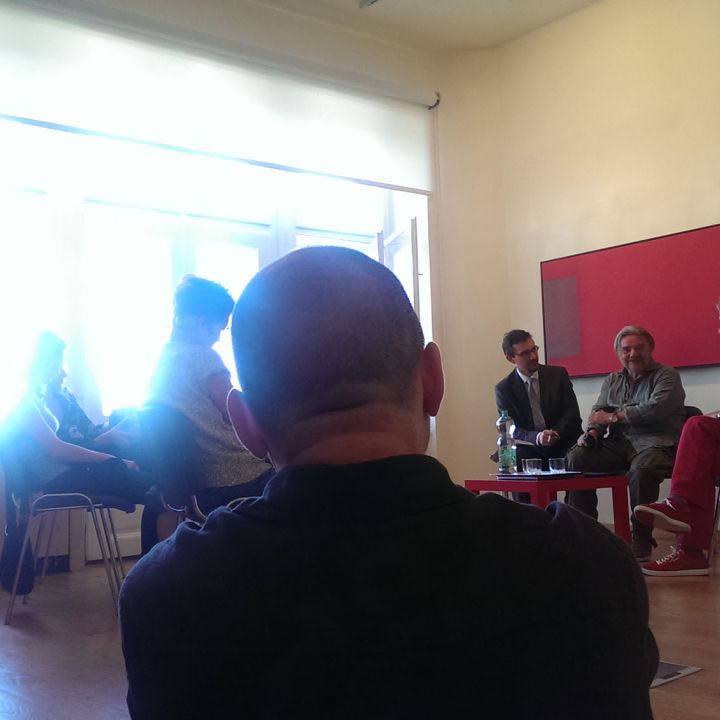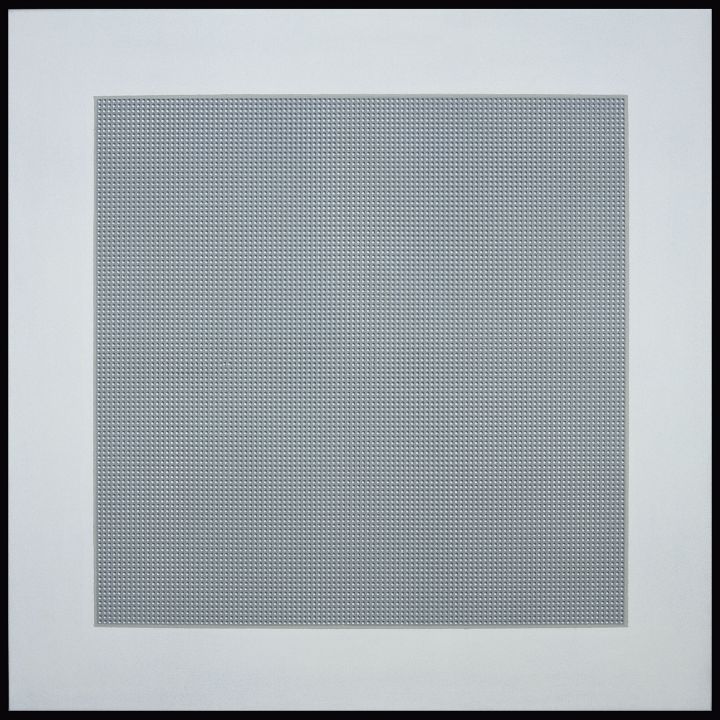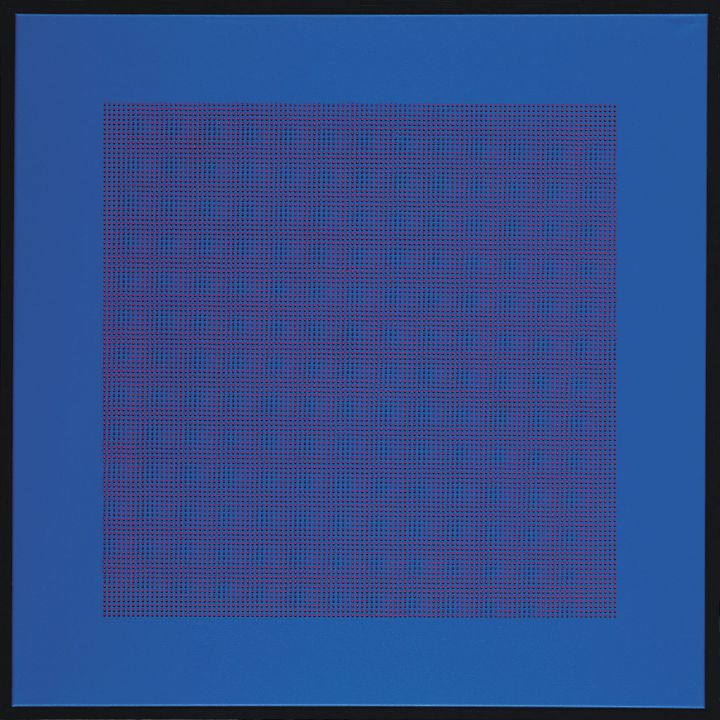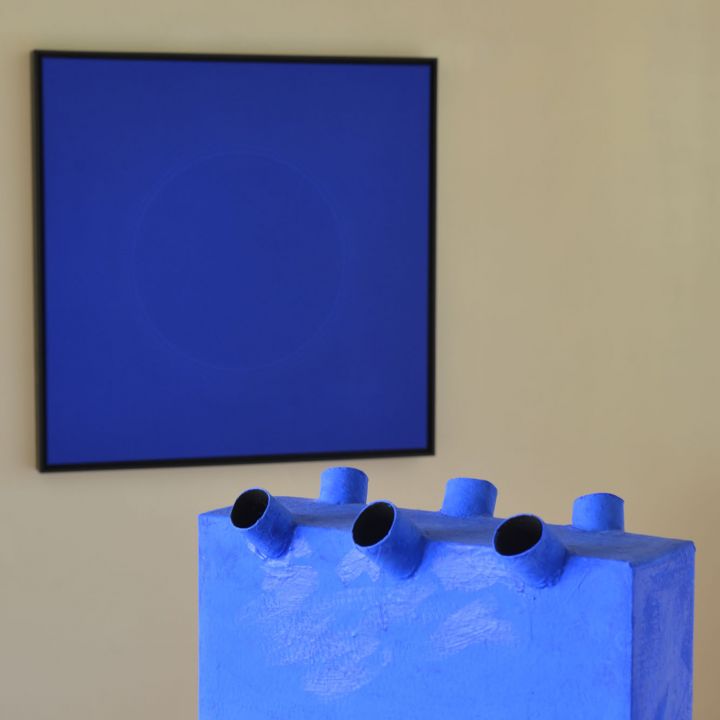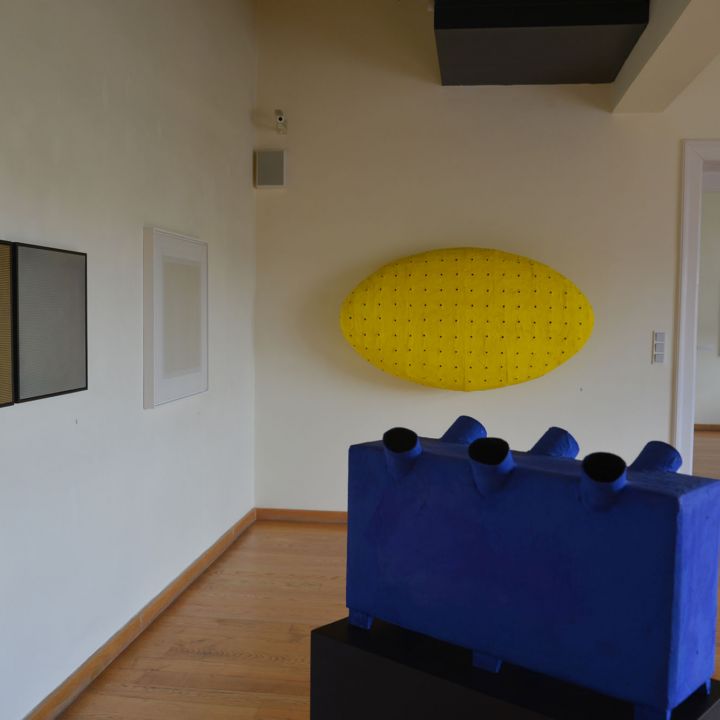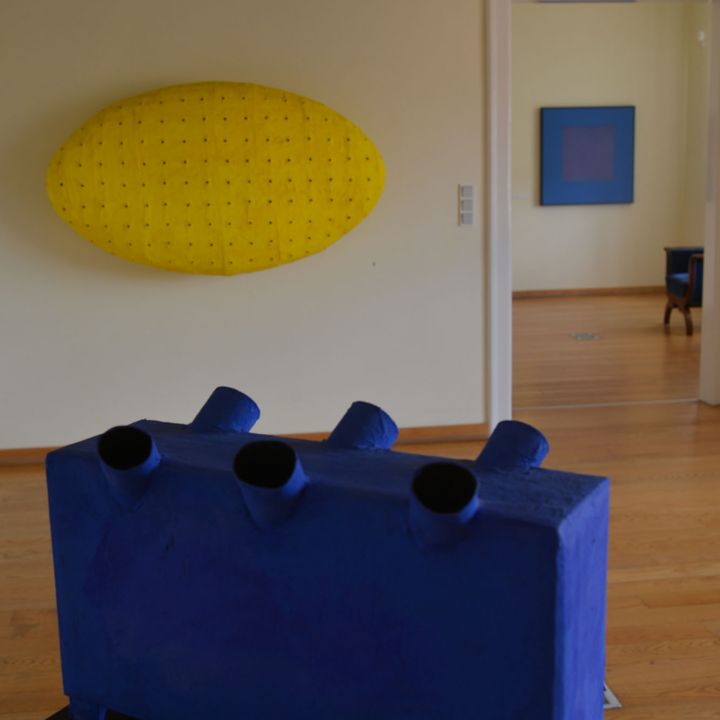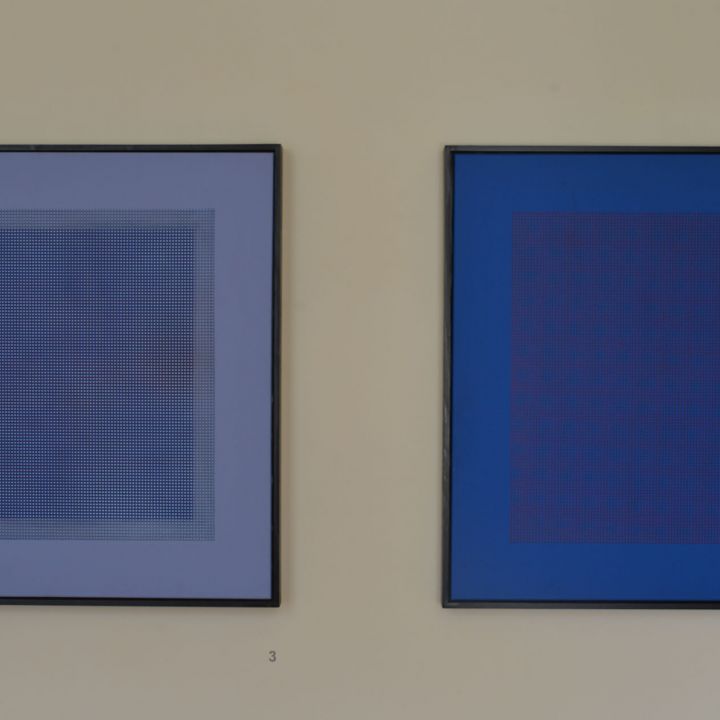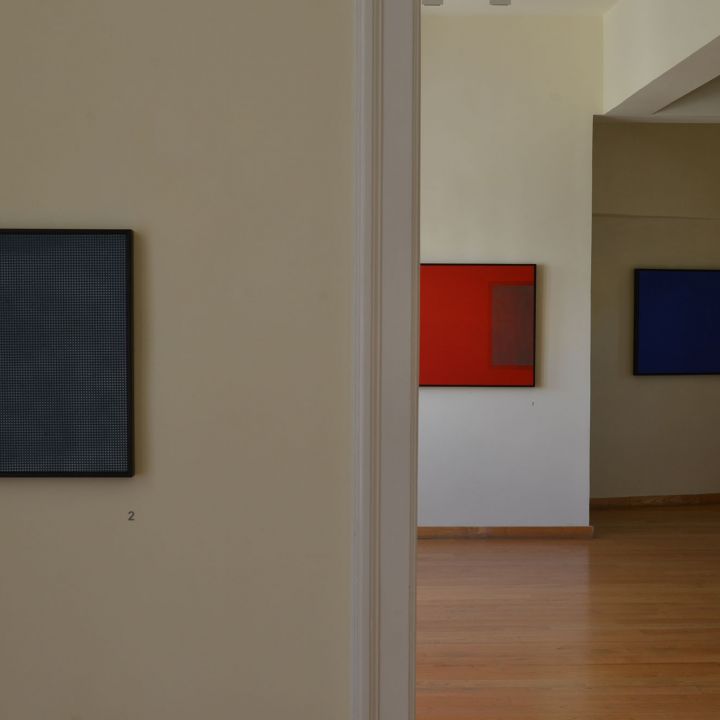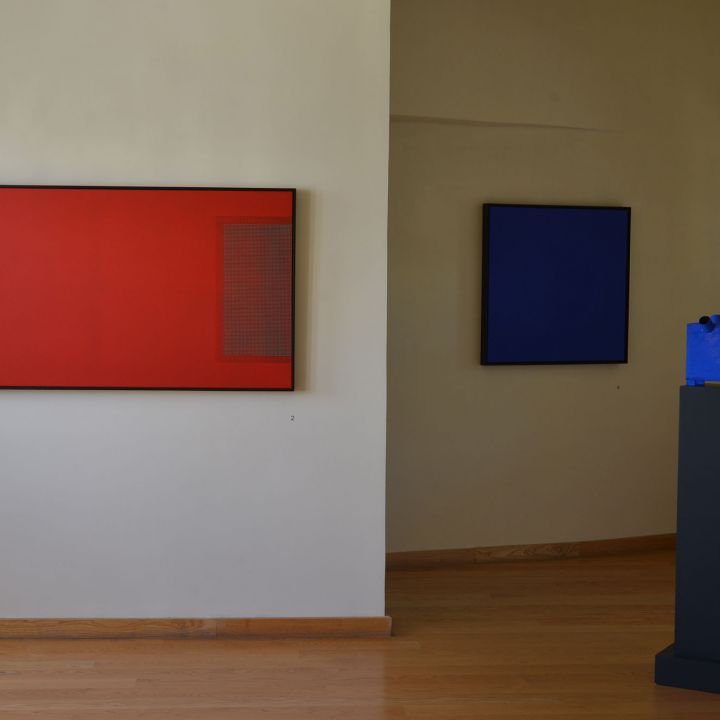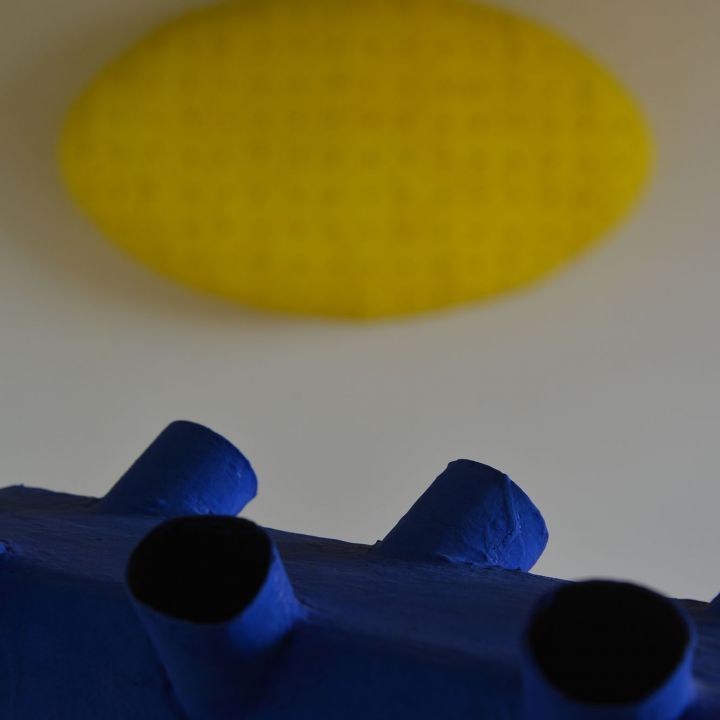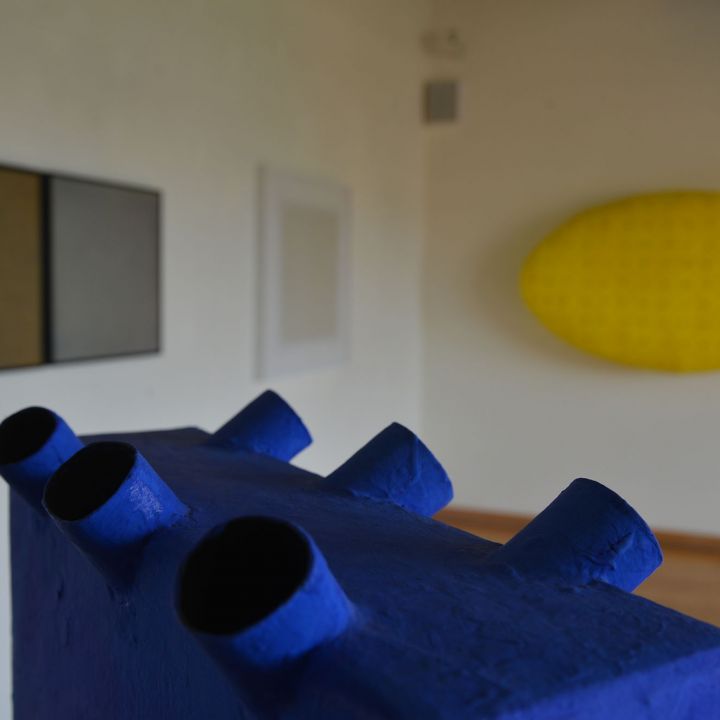"An analytical examination of my objects, sculptures, paintings and works on paper created over the past thirty years, as well as a theoretical reflection dissecting the working processes makes it clear that even with the seemingly diverse spectrum of these works my work has retained its most important identifying features to this day. These three features are the point as a specific form, the dot raster and as an obvious consequence, the circle.
With these elements which can be extended and edited in any direction I achieve spatial effects - in addition to the two-dimensional representation - by varying the distance of the points placed on the different colour bases within the given structure. Overlapping a monochromatic plane with a homogeneous raster structure, shifting and rotating the raster then leads to further, seemingly imaginary steps that carry it forward into the working plane or reveal it as a felt dimension. It is more than logical for me to stick to these themes, which encompass the whole spectrum of representational possibilities. Working these sub-areas in parallel over time results in an overall, readable unity of the complex body of work, which is particularly evident when the results are arranged together in exhibitions and given the opportunity to develop this effect.
The complete enclosure of homogeneous grid structures in square, circular or elliptical machining planes by lines or strip shapes, the delimitation of a total structure by the frame alone, as well as the diagonally or parallel integrated grid shapes, all point to the wide range of operations that can be carried out with a single element. In my further results, I use open rasterization to resolve the geometrically fixed delimitation, the contour of a circle or ellipse. Here I use an outward or inward moving raster structure with a modified point scale, which also in this version allows to experience the spatial effect created on the surface.
Transcendental effects are often mentioned in my paintings. This may be due to the depth of space that unfolds from the raster structures, which although two-dimensional suggest a third dimension. And if we think about it further, phenomena based on visual-physical and psychological factors allow the perception of non-existent movements in the essentially static field of the image. Images vibrate or return to a state of rest depending on the distance and angle of vision of the viewer. This perception is subjective and differentiated. It is an optical phenomenon, which can be influenced by the targeted colour management of the background, the ground surface. By rotating the raster and overlaying the first raster layer with the base colour, depending on the rotation angle of the working tool, a whole spectrum of large-format raster overlays can be obtained, which can be the starting point for further investigations both from an optical and a technical point of view.
Above all, sculptures and objects derived from the circular form have an impact through their power of volume, which is defined by their spatiality. In my various artistic cycles I organise rows of clearly defined geometric forms into a single, complex sculpture. Here the raster pattern sometimes inserted as perforations, sometimes applied in a tactile way enhances the relationship of the object to space. Light and shadow, shimmering or muted colour treatment support both the third dimension and the reflection of the environment, sometimes weaker, sometimes stronger. My newer forms, developed from modifications of the circle to the elliptical are elliptical in their base, side and top views, as well as in their cross-section. Their front view, meanwhile is defined by a homogeneous grid structure, which I create from aligned cross-sections of tubes. The tubes themselves lead through the body and convincingly connect its form-forming external surfaces. This open structure allows the viewer to see inside the object depending on his or her position. The spherical form whether hung on a wall or lying on the ground gives these works an impression of floating lightness."
Reinhard Roy
Frankfurt am Main, 2014

